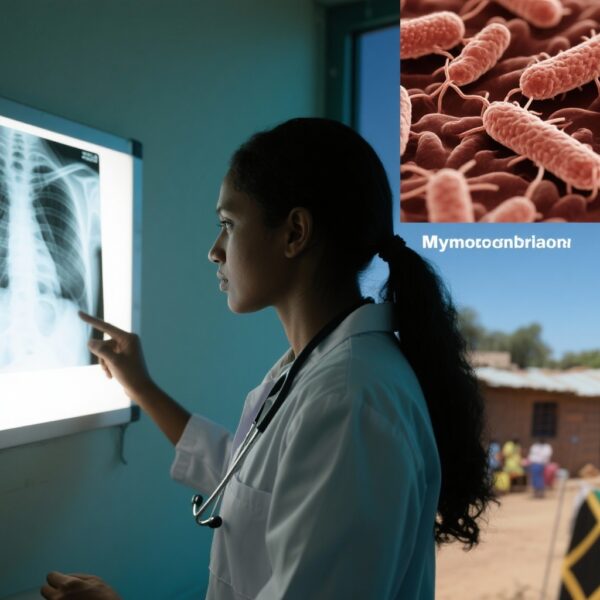Highlight
This landmark longitudinal cohort study of over 27,000 initially healthy women demonstrates that elevated plasma concentrations of high-sensitivity C-reactive protein (hsCRP), low-density lipoprotein (LDL) cholesterol, and lipoprotein(a) significantly associate with increased 30-year risk of ischaemic stroke. Notably, combined elevation of all three biomarkers potentiates stroke risk further. Conversely, these biomarkers did not predict haemorrhagic stroke risk. These findings provide robust evidence supporting comprehensive lipid and inflammatory biomarker screening for improved primary stroke prevention among women.
Study Background
Stroke remains a leading cause of disability and mortality worldwide, with ischemic stroke constituting the majority of cases. Primary prevention relies largely on modifiable risk factor management, including lipid control. Current guidelines strongly recommend LDL cholesterol screening from age 40 to mitigate atherosclerotic risk; however, recommendations regarding markers of inflammation such as hsCRP and genetically influenced lipoprotein(a) levels remain uncertain, particularly in women. Women may exhibit unique cardiovascular risk profiles, highlighting the need for gender-specific longitudinal evidence. This study addresses a critical gap by investigating the long-term predictive value of hsCRP, LDL cholesterol, and lipoprotein(a) for stroke risk in an extensive prospective cohort of initially healthy women.
Study Design
The analysis utilized data from the Women’s Health Study (WHS), a United States-based randomized controlled trial originally designed to evaluate aspirin and vitamin E for cardiovascular and cancer prevention, concluding in 2004. The current investigation included 27,939 women aged ≥45 years without cardiovascular disease or cancer at baseline who provided blood samples for biomarker quantification between 1992 and 1995. Biomarkers measured were hsCRP, LDL cholesterol, and lipoprotein(a). Participants were followed prospectively for up to 30 years, with annual questionnaires capturing stroke incidence. Stroke outcomes were classified into ischaemic and haemorrhagic subtypes. The study applied cumulative incidence analyses and age- and multivariable-adjusted cause-specific Cox proportional hazards models to estimate hazard ratios (HRs) for stroke across biomarker quintiles and combined biomarker elevations.
Key Findings
During a median follow-up of 27.7 years, 1,345 stroke events were identified. Participant baseline characteristics included a median age of 53 years, median body mass index of 25 kg/m2, 12% current smokers, 25% with hypertension, and 2% with diabetes.
Higher baseline levels of hsCRP displayed a strong graded association with cumulative incidence of total and ischaemic stroke. Women in the highest hsCRP quintile (≥5.2 mg/L) compared to the lowest (<0.7 mg/L) had multivariable-adjusted HRs of 1.32 (95% CI 1.07–1.61) for total stroke and 1.56 (1.22–1.99) for ischaemic stroke.
LDL cholesterol showed a more modest relationship. Only those in the highest quintile (≥3.4 mmol/L) had increased risk compared to the lowest (<2.5 mmol/L), with HRs of 1.05 (0.88–1.25) for total stroke and 1.17 (0.95–1.45) for ischaemic stroke, which did not reach strong statistical significance.
Lipoprotein(a), a genetically determined lipoprotein variant linked to atherothrombosis, demonstrated significant association with stroke risk. Women in the top quintile (≥44.1 mg/dL) had HRs of 1.23 (1.04–1.45) for total stroke and 1.27 (1.05–1.55) for ischaemic stroke compared to the lowest quintile (<3.6 mg/dL).
Importantly, having all three biomarkers in the highest quintile corresponded to substantially greater risk escalation, with HRs of 1.60 (1.10–2.34) for total stroke and 1.79 (1.23–2.61) for ischaemic stroke versus none elevated. None of the biomarkers significantly predicted haemorrhagic stroke risk, suggesting pathophysiological specificity.
Expert Commentary
The findings emphasize the multifactorial nature of ischemic stroke risk, underscoring inflammatory pathways (hsCRP) and lipid abnormalities (LDL cholesterol and lipoprotein(a)) as complementary contributors in healthy women. While LDL cholesterol remains a cornerstone of vascular risk assessment, the incremental prognostic value of hsCRP and lipoprotein(a) supports their potential integration into risk evaluation algorithms. The long-term follow-up and large sample size add robustness and relevance, yet the cohort’s demographics may limit generalizability to diverse populations. Mechanistically, hsCRP reflects chronic low-grade inflammation conducive to atherosclerotic plaque instability, whereas lipoprotein(a) promotes prothrombotic and proinflammatory states. Clinical guidelines may consider these biomarkers for refined stroke risk stratification to tailor preventive interventions.
Conclusion
This prospective cohort study provides compelling evidence that elevated plasma hsCRP, LDL cholesterol, and lipoprotein(a) are significant long-term predictors of ischemic stroke risk among initially healthy women. Their combined assessment offers enhanced risk discrimination, advocating for expanded biomarker screening beyond LDL cholesterol alone in primary stroke prevention strategies. Early identification of at-risk individuals may facilitate targeted lifestyle modifications and therapeutic measures, ultimately reducing the burden of stroke in women. Further research to validate these findings across diverse populations and to clarify the cost-effectiveness of routine biomarker screening is warranted.
Funding and Clinical Trial Registration
This study was funded by the US National Heart, Lung, and Blood Institute, the National Cancer Institute, and the Independent Research Fund Denmark. The original Women’s Health Study was a registered clinical trial investigating aspirin and vitamin E for cardiovascular and cancer prevention.
References
Nordestgaard AT, Moorthy MV, Cook NR, Rifai N, Lee IM, Buring JE, Ridker PM. High-sensitivity C-reactive protein, LDL cholesterol, lipoprotein(a) and 30-year risk of stroke in healthy women: a prospective, longitudinal cohort study. Lancet Neurol. 2025 Nov;24(11):920-930. doi: 10.1016/S1474-4422(25)00306-0. PMID: 41109233.


